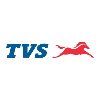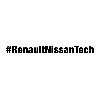
Tata Motors
Proud winner of ABECA 2025 - AmbitionBox Employee Choice Awards
Filter interviews by
Tata Motors Welder Trainee Interview Questions and Answers
Tata Motors Welder Trainee Interview Experiences
1 interview found

(2 Questions)
- Q1. 1. What are the types of welding?
- Ans.
There are four main types of welding: MIG, TIG, Stick, and Flux-Cored.
MIG (Metal Inert Gas) welding uses a wire electrode and a shielding gas to join two metal pieces together.
TIG (Tungsten Inert Gas) welding uses a tungsten electrode and a shielding gas to create a precise and clean weld.
Stick welding (also known as Shielded Metal Arc Welding or SMAW) uses a stick electrode and a flux coating to create a strong bond b...
- Q2. Pressure and non-pressure welding spells?
- Ans.
Pressure welding involves joining metals under high pressure, while non-pressure welding is done without pressure.
Pressure welding is used for joining thick metals and requires specialized equipment.
Non-pressure welding is commonly used for thinner metals and can be done with simple equipment like a soldering iron.
Examples of pressure welding include friction welding and explosion welding.
Examples of non-pressure weldi...
(3 Questions)
- Q1. What is fraction welding?
- Ans.
Fraction welding is a welding process that involves joining two or more metal parts by melting and fusing them together.
Fraction welding is also known as fusion welding.
It involves the use of heat to melt and fuse metal parts together.
This process is commonly used in the construction of pipelines, tanks, and other large metal structures.
Fraction welding requires a high level of skill and precision to ensure a strong an...
- Q2. What is spot welding?
- Ans.
Spot welding is a type of welding process where two metal surfaces are joined together by applying heat and pressure at a specific spot.
It is commonly used in the automotive industry to join sheet metal parts together.
The process involves passing an electric current through the metal surfaces to be joined, which creates heat and melts the metal at the spot where the electrodes are placed.
The electrodes then apply press...
- Q3. What is gas welding?
- Ans.
Gas welding is a process of joining metals using heat generated by a gas flame.
Gas welding involves the use of a gas flame to heat the metal to be joined
The metal is then melted and fused together
Common gases used in gas welding include acetylene, propane, and butane
Gas welding is commonly used in automotive and plumbing industries
Interview Preparation Tips
Carefully and enjoy your day
Interview questions from similar companies

I applied via Walk-in and was interviewed before Sep 2021. There were 2 interview rounds.

(1 Question)
- Q1. Why you what to join bajaj automobile
- Ans.
I want to join Bajaj Automobile because of their strong reputation in the industry and their commitment to innovation and customer satisfaction.
Bajaj Automobile has a strong reputation in the industry for producing high-quality vehicles.
They have a track record of innovation and introducing new technologies in their products.
Bajaj Automobile is known for their focus on customer satisfaction and providing excellent afte...
Interview Preparation Tips

I applied via Campus Placement and was interviewed before Nov 2020. There was 1 interview round.
Interview Questionnaire
5 Questions
- Q1. Questions are good.
- Q2. About nolice.
- Q3. About life stills
- Q4. About Family.
- Q5. About safety.
Interview Preparation Tips

I applied via Campus Placement and was interviewed before Aug 2020. There were 3 interview rounds.
Interview Questionnaire
1 Question
- Q1. It was technial and some hr questions
Interview Preparation Tips
So whatever you have done worked get completed hold on it.
What people are saying about Tata Motors






Interview Preparation Tips
Experience: "I was only questioned on my resume,
-internship
-contribution to college through extra curriculars
-personal opinion based questions based on information I provided
ps: they laid stress on a good pointer for shortlisting for interview then on extra curricular activities for selection."
General Tips: "prepartion for campus begins as early as the begining of 2nd year.
please feel free to mail / call for any help.
All the Best.
"
College Name: Veermata Jijabai Technological Institute, Mumbai [ VJTI ]

I applied via Referral and was interviewed before Sep 2017. There were 2 interview rounds.
Interview Preparation Tips
Experience: I got confirmation from HR at December, but they gave letter in march month, day by day I have to call them and follow for the offer letter, They gave offer letter after 3 months, but ask me to join within one month.
General Tips: Please dont prefer to work in Mahindra and dont spoil your carrier.
Duration: 1-3 Months

I applied via Recruitment Consultant and was interviewed before Nov 2019. There was 1 interview round.
Interview Questionnaire
2 Questions
- Q1. What is the Finance ?
- Ans.
Finance is the management of money and investments, including activities such as budgeting, investing, and financial planning.
Finance involves the management of money and assets.
It includes activities such as budgeting, investing, and financial planning.
Finance helps individuals and organizations make informed financial decisions.
Financial statements and reports are used to analyze and track financial performance.
Examp...
- Q2. What is the source of finance?
- Ans.
Sources of finance include equity, debt, and retained earnings.
Equity financing involves selling ownership shares in the company to investors.
Debt financing involves borrowing money from lenders and paying it back with interest.
Retained earnings are profits that are reinvested back into the company.
Other sources of finance include grants, subsidies, and crowdfunding.
The choice of finance depends on factors such as the ...
Interview Preparation Tips

Interview Questionnaire
4 Questions
- Q1. Tell us something about your self, summer inetrnship, family etc. ?
- Ans.
I am a hardworking individual with a passion for learning and growth. I completed a summer internship in marketing and come from a supportive family.
I am a hardworking individual
Passionate about learning and growth
Completed a summer internship in marketing
Come from a supportive family
- Q2. Demonstrate how will you retain an employee at your dealer's?
- Q3. Are you comfortable with working in different city and travelling?
- Ans.
Yes, I am comfortable with working in different cities and travelling.
I have previous experience working in different cities and travelling for work.
I am adaptable and can quickly adjust to new environments.
I enjoy exploring new places and meeting new people.
I understand the importance of being flexible and available for work-related travel.
I am willing to make necessary arrangements to ensure smooth travel and work ex...
- Q4. Why did you enter the GD late?
- Ans.
I apologize for being late. I had an emergency that I had to attend to.
I had an unexpected emergency that required my immediate attention
I made sure to inform the organizers as soon as I could
I understand the importance of punctuality and will ensure it in the future
Interview Preparation Tips
Experience: Its a simple test to check your people skills, your personality and whether you are capable to handle difficult situations
Tips: Its very simple, no need to worry abt it. Everyone clears this one.
Round: Group Discussion
Experience: The GD took place on 12th feb and so the topic was very recent. Everybody had abundant data and thus plenty of points to make. It was a well structured GD, 10 minutes to discuss and 5 minutes to individually conclude the topic. I made my first point pretty late which was a wrong thing to do as I was asked about this in my interview. Later on I was successful to put 3-4 distinct points and as I was 8th amongst 10 ppl I could structure my conclusion well.
Tips: 1. Please read about the recent topics in newspaper.2.Numbers aren't important they don't make much difference. 3. If you are applying for marketing/sales job be presentable, improve your diction and grammar. 4.Make distinct points.
Duration: 15 minutes
Round: HR Interview
Experience: The HRs were very calm and poised, they gave me enough time to frame my answers. Overall it was a pleasant experience.
Tips: Be yourself and show that you need this job. Show that you come from a family which is supportive and that you are flexible when it comes to location.
College Name: KJ SOMAIYA INSTITUTE OF MANAGEMENT STUDIES AND RESEARCH

I applied via Naukri.com and was interviewed before Mar 2021. There was 1 interview round.
(1 Question)
- Q1. Tell me about yourself
Interview Preparation Tips

I applied via Walk-in and was interviewed before Aug 2020. There was 1 interview round.
Interview Questionnaire
1 Question
- Q1. Trade related
Interview Preparation Tips
Tata Motors Interview FAQs
Tell us how to improve this page.
Tata Motors Interviews By Designations
- Tata Motors Senior Manager Interview Questions
- Tata Motors Graduate Engineer Trainee (Get) Interview Questions
- Tata Motors Mechanical Engineer Interview Questions
- Tata Motors Quality Engineer Interview Questions
- Tata Motors Design Engineer Interview Questions
- Tata Motors Territory Sales Manager Interview Questions
- Tata Motors Sales Executive Interview Questions
- Tata Motors Supervisor Interview Questions
- Show more
Interview Questions for Popular Designations
Interview Questions from Similar Companies
Tata Motors Welder Trainee Reviews and Ratings
based on 3 reviews
Rating in categories
|
Senior Manager
6.7k
salaries
| ₹12.7 L/yr - ₹22.7 L/yr |
|
Deputy General Manager
868
salaries
| ₹25.1 L/yr - ₹45 L/yr |
|
Executive
834
salaries
| ₹4 L/yr - ₹11.3 L/yr |
|
Quality Engineer
421
salaries
| ₹1.5 L/yr - ₹4.5 L/yr |
|
Territory Sales Manager
386
salaries
| ₹12.4 L/yr - ₹22.6 L/yr |

Maruti Suzuki

Mahindra & Mahindra

Mercedes-Benz Research and Development India

TVS Motor
- Home >
- Interviews >
- Tata Motors Interview Questions













